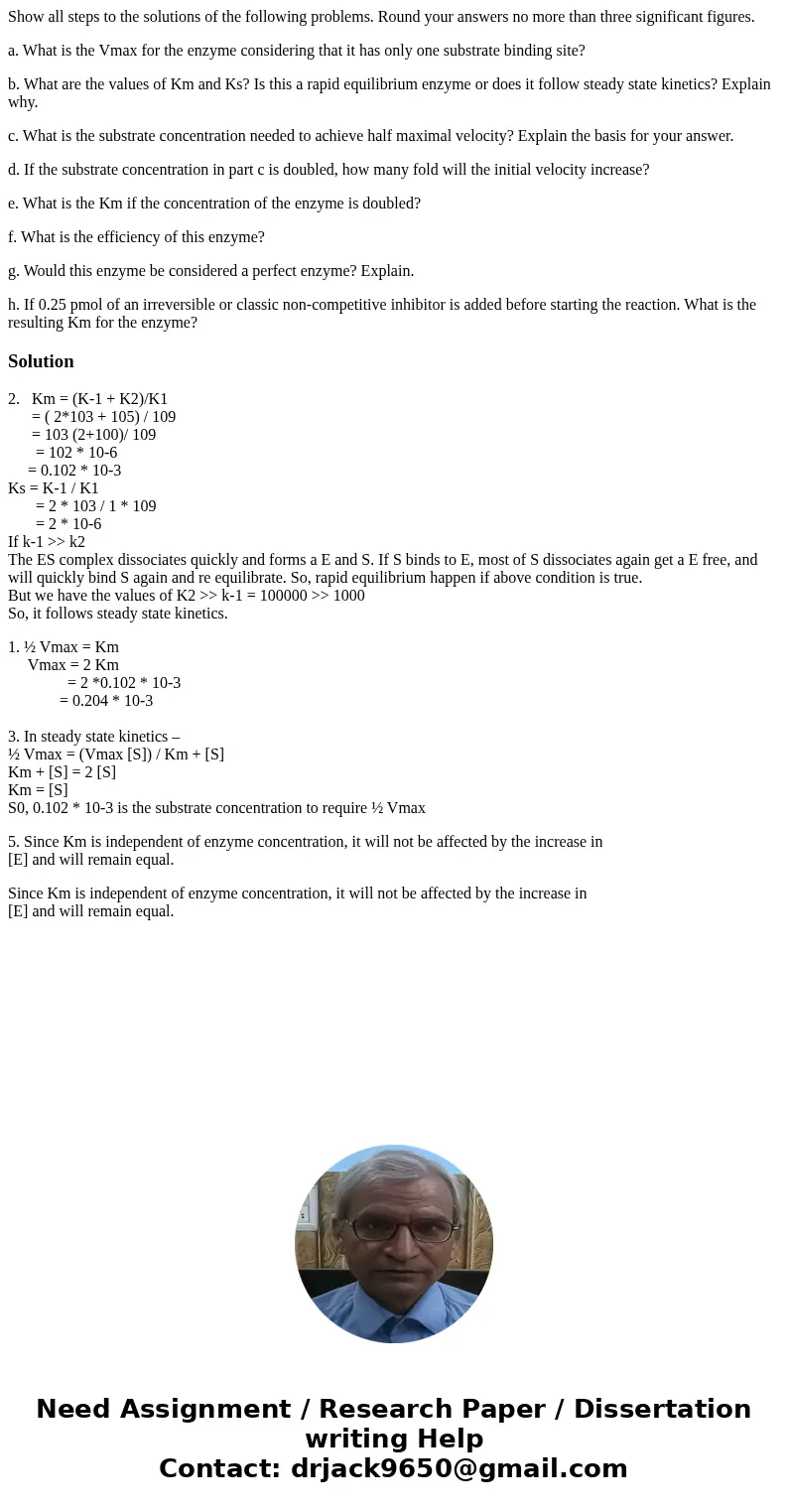Show all steps to the solutions of the following problems Ro
Show all steps to the solutions of the following problems. Round your answers no more than three significant figures.
a. What is the Vmax for the enzyme considering that it has only one substrate binding site?
b. What are the values of Km and Ks? Is this a rapid equilibrium enzyme or does it follow steady state kinetics? Explain why.
c. What is the substrate concentration needed to achieve half maximal velocity? Explain the basis for your answer.
d. If the substrate concentration in part c is doubled, how many fold will the initial velocity increase?
e. What is the Km if the concentration of the enzyme is doubled?
f. What is the efficiency of this enzyme?
g. Would this enzyme be considered a perfect enzyme? Explain.
h. If 0.25 pmol of an irreversible or classic non-competitive inhibitor is added before starting the reaction. What is the resulting Km for the enzyme?
Solution
2. Km = (K-1 + K2)/K1
= ( 2*103 + 105) / 109
= 103 (2+100)/ 109
= 102 * 10-6
= 0.102 * 10-3
Ks = K-1 / K1
= 2 * 103 / 1 * 109
= 2 * 10-6
If k-1 >> k2
The ES complex dissociates quickly and forms a E and S. If S binds to E, most of S dissociates again get a E free, and will quickly bind S again and re equilibrate. So, rapid equilibrium happen if above condition is true.
But we have the values of K2 >> k-1 = 100000 >> 1000
So, it follows steady state kinetics.
1. ½ Vmax = Km
Vmax = 2 Km
= 2 *0.102 * 10-3
= 0.204 * 10-3
3. In steady state kinetics –
½ Vmax = (Vmax [S]) / Km + [S]
Km + [S] = 2 [S]
Km = [S]
S0, 0.102 * 10-3 is the substrate concentration to require ½ Vmax
5. Since Km is independent of enzyme concentration, it will not be affected by the increase in
[E] and will remain equal.
Since Km is independent of enzyme concentration, it will not be affected by the increase in
[E] and will remain equal.

 Homework Sourse
Homework Sourse